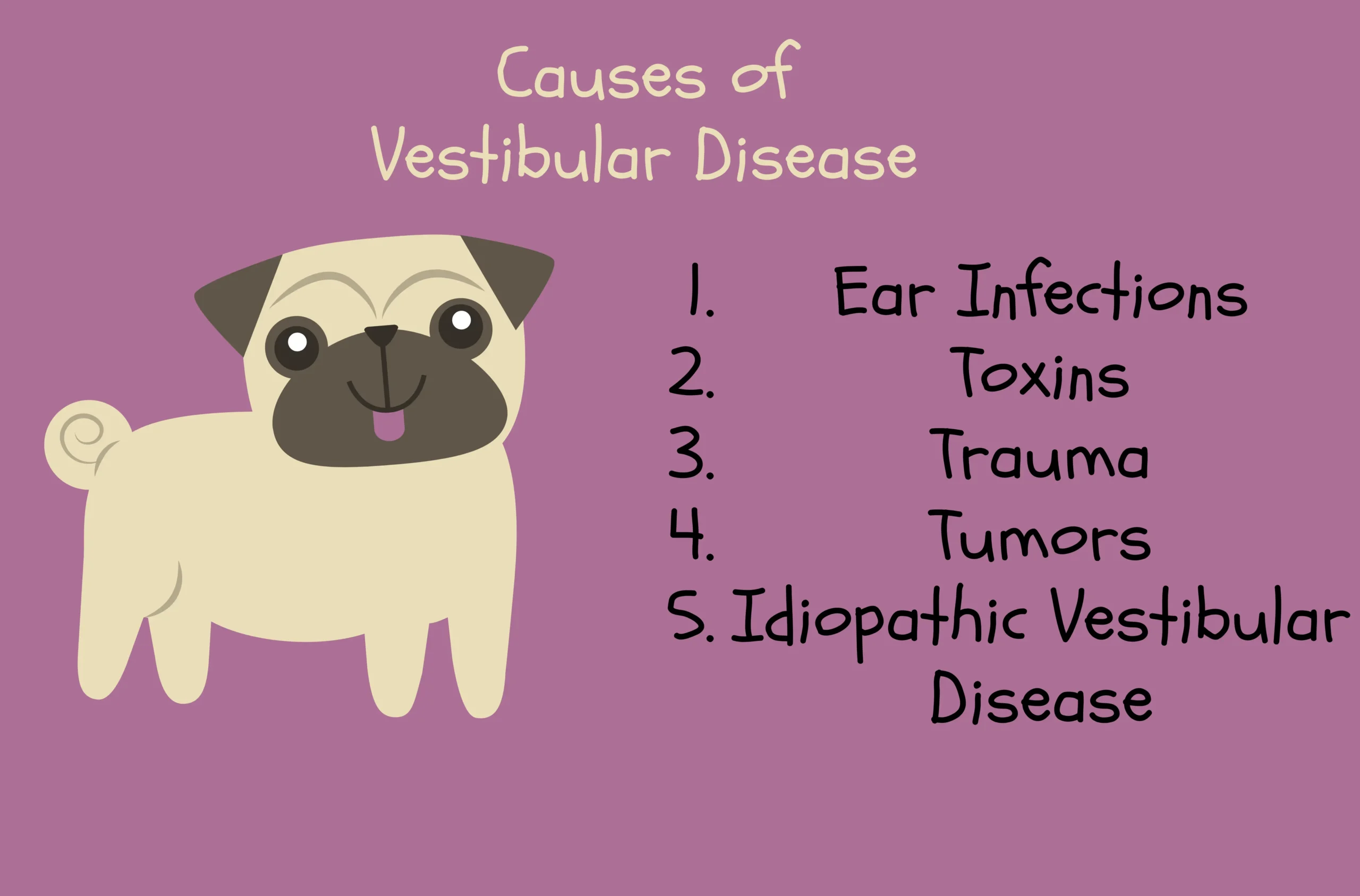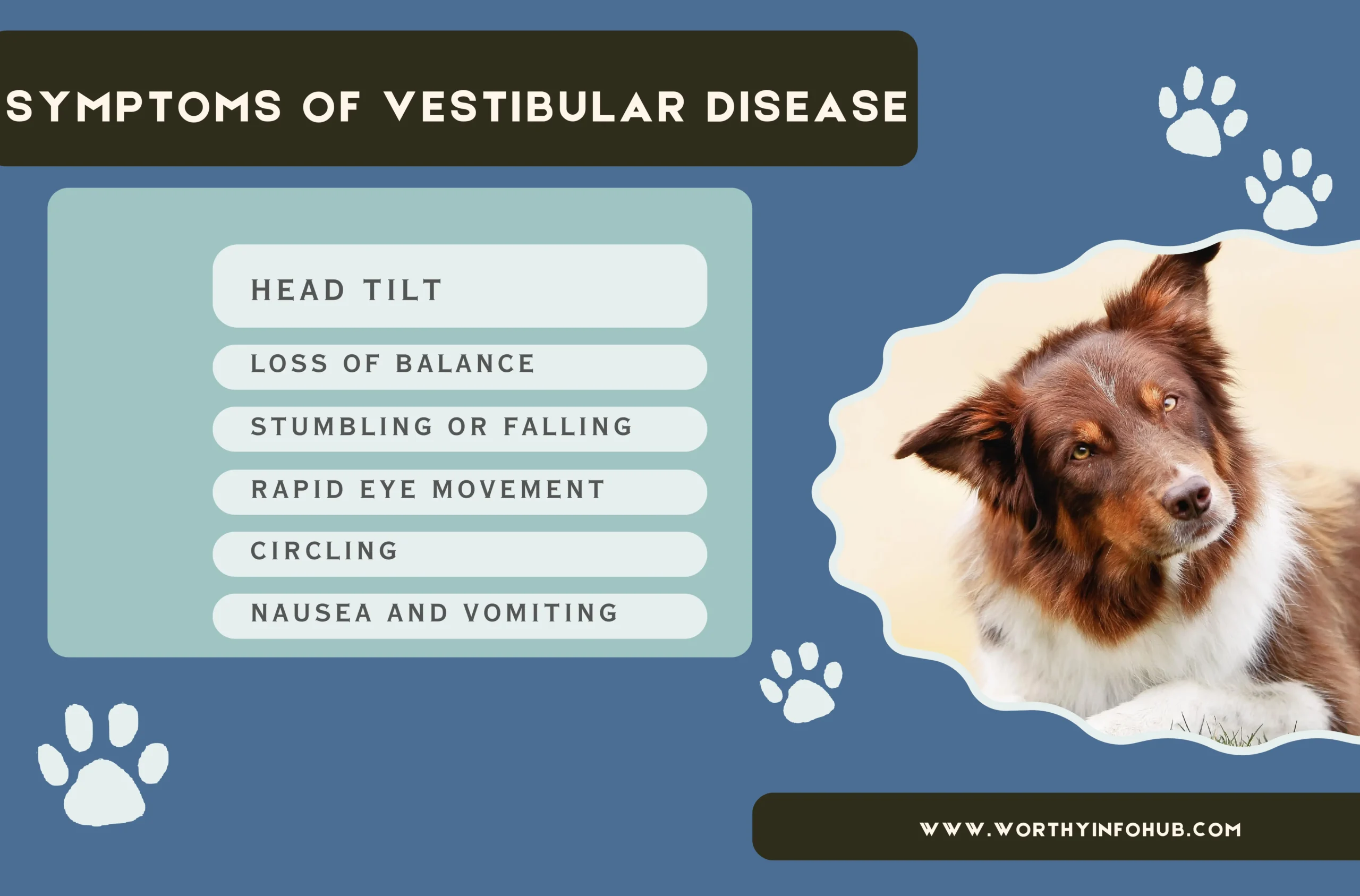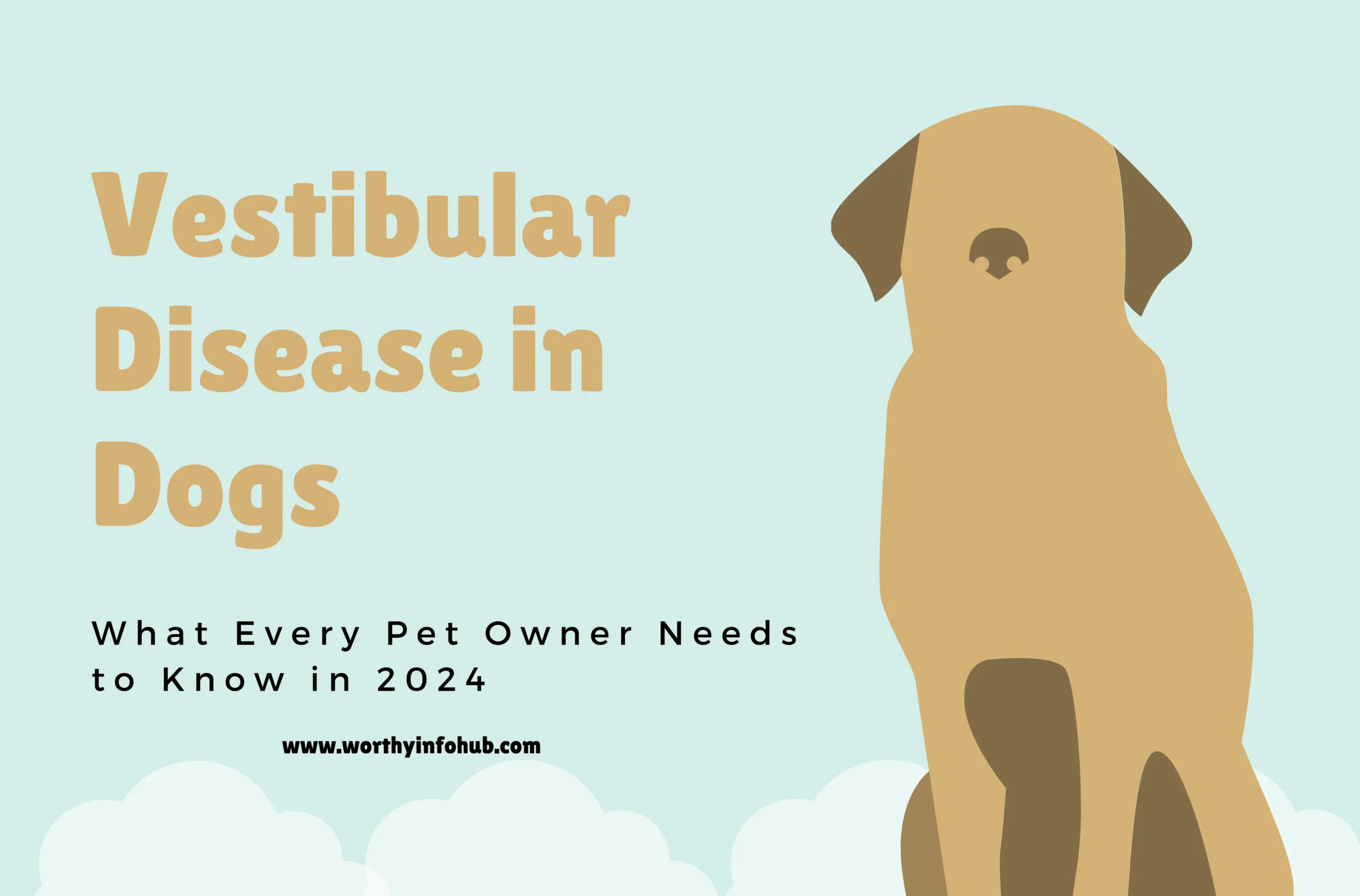Vestibular Disease in Dogs can lead to problems such as sudden onset of ataxia, head holder or tilt, and disorientation. Discover signs and how to get rid of the illness so your pet can return to its healthy state easily. Useful advice is given on how to take care of a dog with this pathology and what one should expect during the period of rehabilitation. That’s why to help your dog live a healthier happy life, it is good to prepare yourself with some information about the Vestibular Disease in dogs.
Introduction
Medicinal disorders of the vestibular system in dogs are those disorders that are very unpalatable to both the dog and the owner. This condition impacts on its balance and on the capacity to coordinate its movements and as such basic activities that healthy dogs would always do pose a big problem to the affected dogs. Understanding what vestibular disease is, the causes, signs, and managing it can help a lot as it offers a lot of comfort to the dog and the owner as well.
What is Vestibular Disease?
Another usage of vestibular disease is a disease that affects the individual’s vestibular system as well as the organ of balance. There are two main types of vestibular disease in dogs and it is quite important to distinguish between the two.
- Peripheral Vestibular Disease: This kind affects the inner ear also known as the vestibular system and the vestibular nerve.
- Central Vestibular Disease: It is related to the brainstem and cerebellum which together form the posterior part of the brain.
They can both present to the primary care practice and present the same way but the causes and how they’re handled will be different.
Possible Risk Factors in Concerning Vestibular Disease in Dogs

Awareness of the probable causes of vestibular disease in dogs will mean that it could be managed and most definitely prevented. Common causes include:
- Ear Infections: When the Ear infection worsens or became a chronic problem, the one that is affected is vestibular.
- Toxins: There are also some specific medications and toxins, that affect the function of the vestibular system negatively.
- Trauma: When one has had their head injured one is most likely to experience some vestibular problems.
- Tumors: The most frequent pathological processes, which result in the alterations of the peripheral vestibular system are tumors in the ear or the brain.
- Idiopathic Vestibular Disease: Vestibular syndrome is referred to as old dog vestibular syndrome and its cause is unknown though it affects dogs that are old.
Symptoms
As illustrated in the above discussion, acknowledging the signs of vestibular disease treatment is critical. Common symptoms include:
- Head Tilt: Dogs can also have posture with their head laying to one side.
- Loss of Balance: Such that it hampers or interferes with the ability to stand or walk to some extent.
- Stumbling or Falling: They may stagger like drunks or be uncoordinated in staggering.
- Rapid Eye Movement (Nystagmus): Ocular dysmetria which is another name for the total lack of ability to control eye movements.
- Nausea and Vomiting: Because of distress and
- Circling: Dogs can move in circles and moving in one direction is not a rare thing.
There are instances when you consider rushing your dog to the vet, these are severe symptoms like, inability to stand or being very disoriented.

Diagnosis of Vestibular Disease in dogs
The identification of vestibular disease in dogs requires the veterinarian to conduct some palpation on the dog. Your vet may perform:
- Physical Examination: As in all patients with ear malformation, M developed normally otherwise for age, with no ear infections and no neurological deficits present.
- Diagnostic Tests: Some of the ones used include blood tests, ear swab, X-ray, MRI, or CT scan to establish the root cause.
Learn about 10 early signs of Heart failure in Dogs
Treatment Options
Management is based on the origin of the complication. Options include:
- Medications: At present, a non-emetic anti-emetic, an antibiotic if an infection is suspected and a steroid.
- Supportive Care: The three core clinical activities essential for patients’ health status improvement include; Promotion of water intake, healthy eating, and comfort activities.
- Home Remedies: Putting the dog in a comfortable place, where it will not be disturbed by other animals or loud noises, and placing anti-slip mats on the floors.
This paper will focus on the directions for managing vestibular disease in dogs at home.
Caring for a dog with vestibular disease at home requires patience and a few adjustments:
- Safe Environment: The first strategy is to eliminate hazards that can lead to harm, on a general note there are:
- Assistance: Assist you with eating, drinking or getting around as necessary and as you are comfortable.
- Comfort: Always make sure that your dog has some place it can lay down and feel comfortable.
Prognosis and Recovery
The recovery timeline for vestibular disease in dogs can vary:
- Peripheral Vestibular Disease: Therefore, dogs are usually observed to have some improvement within a few days to weeks.
- Central Vestibular Disease: It may be long sometimes and depends on the cause of the recovery.
Regarding the likely hood of recovery, the health status, age and the severity of the condition may vary and influence recovery.
Preventing Vestibular Disease in dogs
While all the cases can not be prohibited, you can take steps to lessen the hazard:
- Regular Vet Visits: So, it is important to have periodic visits to the doctor as the early detection of the problem.
- Ear Care: Teach your pet to use a non-slippery surface and to not shake its head as this can lead to ear infections and inflammations.
- Healthy Lifestyle: A balanced diet as well as the exercise helps in an individual’s overall well-being.
On the subject of quality of life, or the effects of the program on the citizens and their daily lives, three components of quality of life are important to mention.
Vestibular disease in dogs can impact your dog’s quality of life, but with proper care, many dogs can lead happy lives:
- Daily Activities: Were the activities possible for a dog or did you need to adapt with reference to the dog’s physical disabilities?
- Long-term Management: The animals need proper veterinary attention and regular check up.
Living with a dog with vestibular disease
Adapting to a dog with vestibular disease involves emotional and practical support:
- Routine: For the benefit of the dog, then it is recommended that one should maintain a schedule that is rigid bearing in mind that this helps the dog to feel more comfortable.
- Support Network: Turn to people in your life or lose in online forums and groups for help.
- Emotional Care: This is also something that the reader has to do personally; dealing with own stress and anxiety.
Conclusion
Therefore, of all the diseases affecting the quality of life of dogs, vestibular disease in dogs is a condition that can be handled in the right manner. Learning about the factors, signs and therapy of this issue let you assist your canine to overcome it. All the time, but your veterinarian is a great place to start in keeping your dog healthy and happy.
Frequently Asked Questions
- Vestibular disease can it be treated; can the problem be solved?
In general, vestibular disease in dogs can be well treated and this is especially so for peripheral vestibular disease. Some cases may be cured completely or may be managed and treated over time and sometimes for a long time.
- Is vestibular disease uncomfortable for canines?
Essentially, the disorder itself is rarely painful, yet the symptoms of vestibular illness are often characterized by dizziness and nausea. Some pains can be managed to help reduce the suffering of the affected dog.
- What can be done for the dog during such spats?
In an episode, confine your dog and make it comfortable in an environment where it will be safe. Assist with the feeding time and drinking time and check with the vet on the right medicine to give out.
- Is there some dog breeds that are predisposed to developing vestibular disease?
All dogs develop vestibular disease; however, dogs draw closer to their elderly ages and particular varieties as German Shepherds and Cocker Spaniels endure higher risks.
- Considering two questions, can diet influence vestibular disease?
Maintaining a positive health status through a balance diet is associated with the prognosis of managing the vestibular disease in dogs. Seriously, ask your vet about this because there are likely specific recommendations, he/she can make for your dog’s specific case.
For more information, visit our Home Page


[…] Learn more about Vestibular Disease in Dogs: Every Pet Owner Needs to Know in 2024 […]